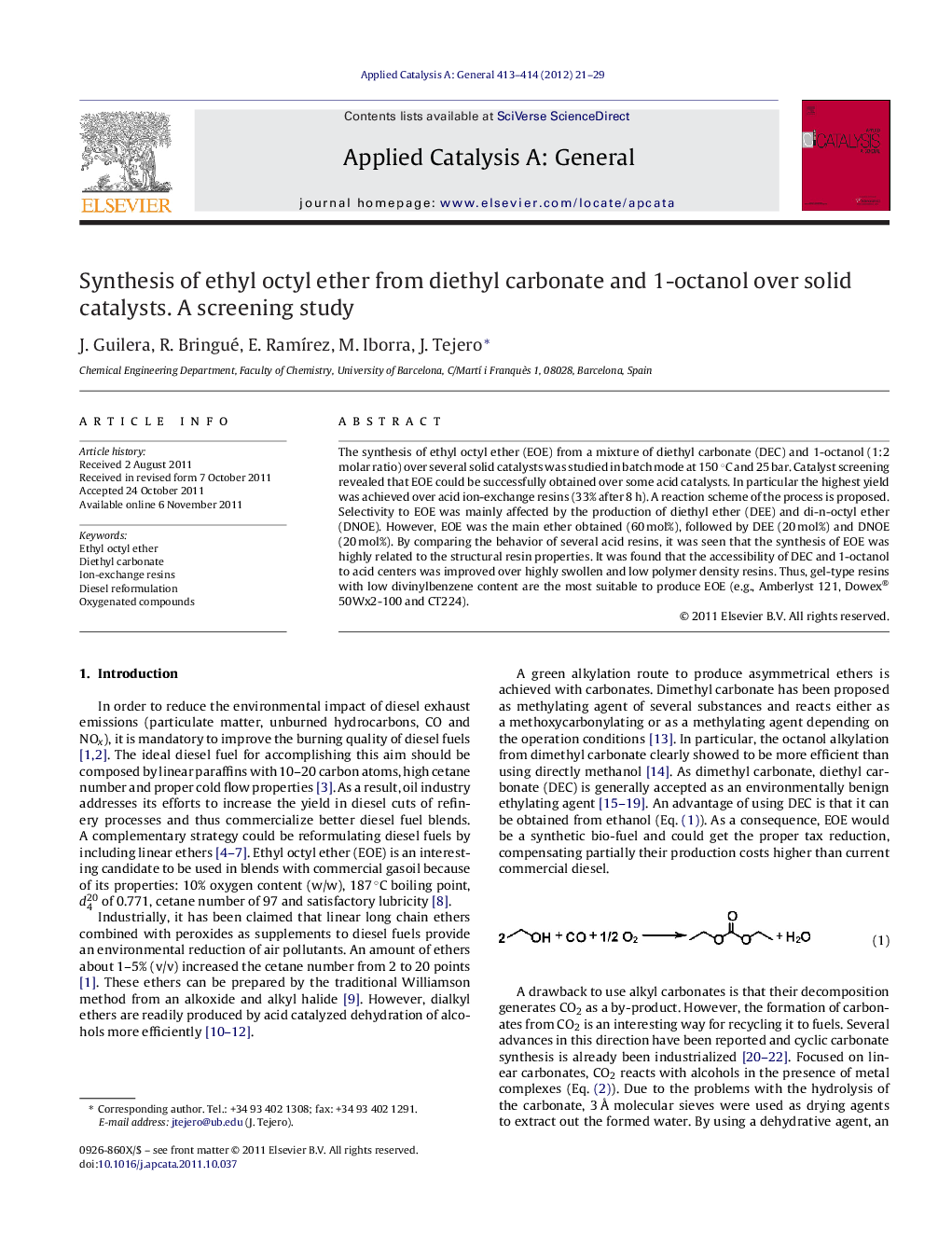| Article ID | Journal | Published Year | Pages | File Type |
|---|---|---|---|---|
| 41089 | Applied Catalysis A: General | 2012 | 9 Pages |
The synthesis of ethyl octyl ether (EOE) from a mixture of diethyl carbonate (DEC) and 1-octanol (1:2 molar ratio) over several solid catalysts was studied in batch mode at 150 °C and 25 bar. Catalyst screening revealed that EOE could be successfully obtained over some acid catalysts. In particular the highest yield was achieved over acid ion-exchange resins (33% after 8 h). A reaction scheme of the process is proposed. Selectivity to EOE was mainly affected by the production of diethyl ether (DEE) and di-n-octyl ether (DNOE). However, EOE was the main ether obtained (60 mol%), followed by DEE (20 mol%) and DNOE (20 mol%). By comparing the behavior of several acid resins, it was seen that the synthesis of EOE was highly related to the structural resin properties. It was found that the accessibility of DEC and 1-octanol to acid centers was improved over highly swollen and low polymer density resins. Thus, gel-type resins with low divinylbenzene content are the most suitable to produce EOE (e.g., Amberlyst 121, Dowex® 50Wx2-100 and CT224).
Graphical abstract.Figure optionsDownload full-size imageDownload high-quality image (84 K)Download as PowerPoint slideHighlights► Ethyl octyl ether is an interesting option to reformulate commercial diesel blends. ► Ethyl octyl ether can be obtained efficiently from diethyl carbonate and 1-octanol. ► Acidic ion exchangers are efficient catalysts for obtaining ethyl octyl ether. ► The zeolite H-BEA-25 are less active but more selective than acidic resins. ► Accessibility to acid sites is a key factor to explain the behavior of acidic resins.
